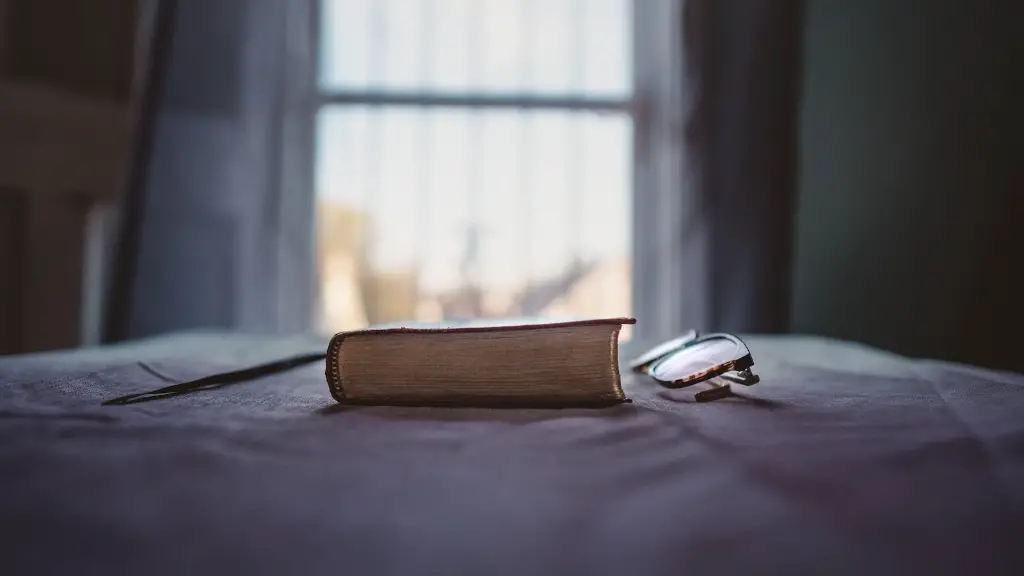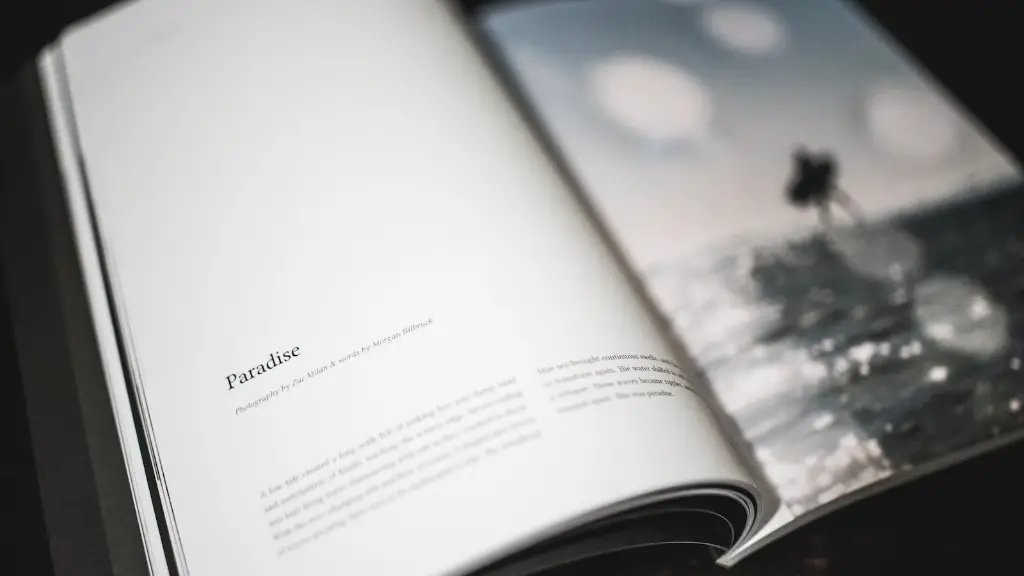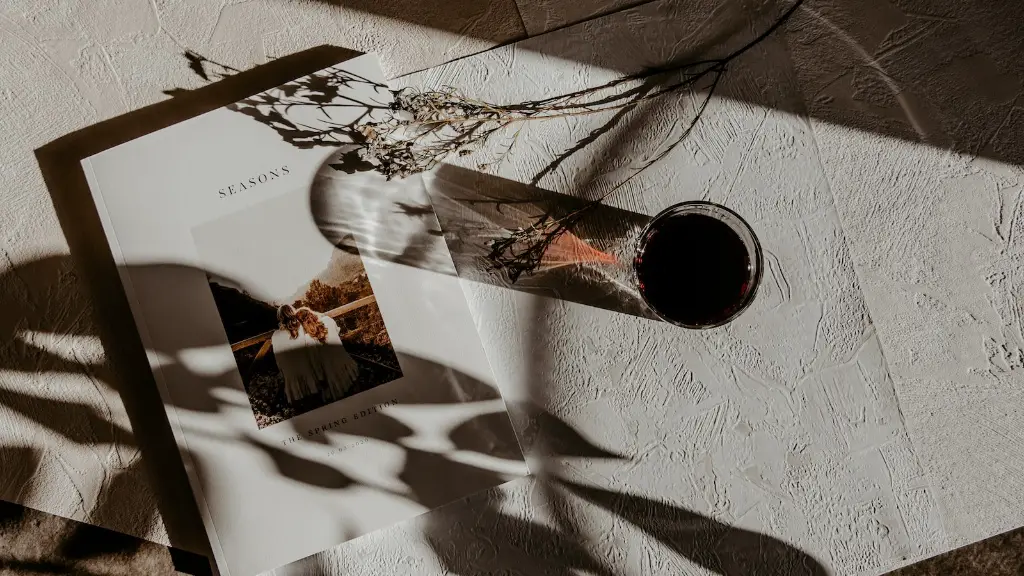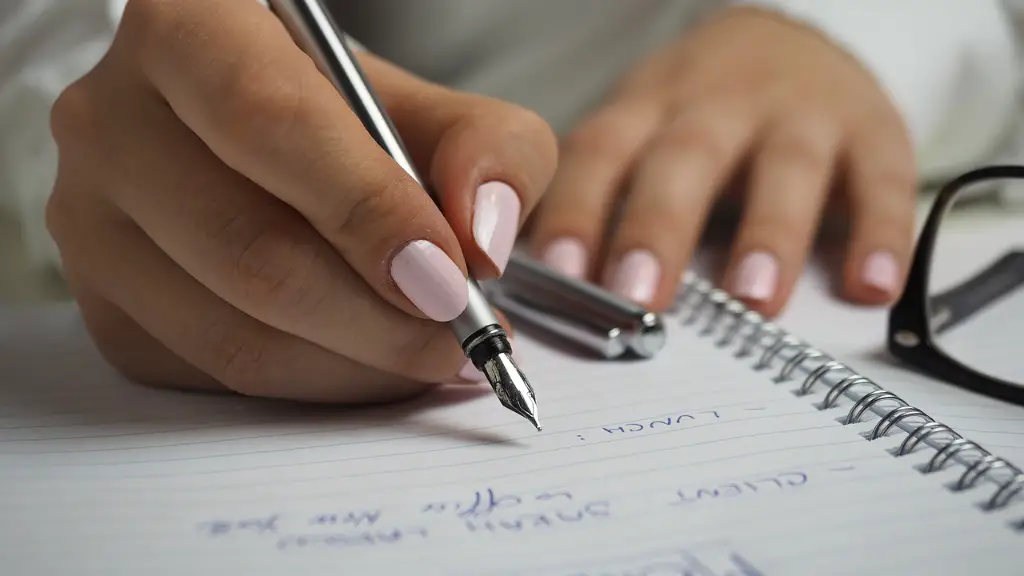The phrase “foot” is an important concept when it comes to the analysis of poetry. It is used to describe the regular pattern of stressed and unstressed syllables in a line of poetry and can be an important tool for understanding the meaning and structure of a poem. To put it simply, feet is the way syllables are arranged in a poetic line.
The traditional poetic foot is called a “iamb,” which is a two-syllable pattern consisting of an unstressed syllable followed by a stressed one. A line of poetry with five iambs would read like “da-DUM da-DUM da-DUM da-DUM da-DUM.” Alternatives to the iambic pattern are trochaic, which reverses the pattern, and anapestic, which has two unstressed syllables followed by one stressed one. Each pattern has a distinct rhythm that can help the reader to understand the poem.
The use of poetic feet can be used to create a sense of rhythm in a poem. Additionally, they can be used to create a sense of emphasis on certain words or ideas. For example, an iambic line of poetry written in the format “da-DUM da-DUM da-DUM da-DUM da-DUM” would emphasize the second syllable in each word. This technique can be used to drive home a particular point or idea in the poem.
The use of feet is also important in creating a clear structure and organization in a poem. Some poets, such as William Shakespeare and John Donne, were known to write poems in which the number of syllables in a line was significant. By thinking about the number of feet in a line, readers can better understand the meaning of a poem. For example, if a poem is written in lines of five iambs, the reader can understand that each word is emphasized and that the poet is emphasizing certain ideas.
In addition to using feet to create a sense of rhythm and structure, many poets also use them to create a sense of flow. This can be done by using a particular pattern of feet for an entire poem, rather than changing it up throughout. For example, by using a pattern of five iambs in a single poem, the poet can create a sense of flow where each line follows naturally from the last.
The use of poetic feet is an important tool for understanding poetry, and can help the reader to gain a deeper insight into the text. Writers can use them to emphasize certain words, create rhythm and flow, and to give the poem structure. By understanding the concept of feet, readers can gain a greater appreciation of poetry and its complex nature.
Varieties of Feet
Most commonly, iambic, trochaic and anapestic poetic feet are used, but other varieties are often found in poetry. Another popular foot is the dactyl, which is three syllables with the first one stressed and the other two unstressed. Dactylic verse is often used for epic poetry, as it is used for a slower and more methodical delivery. A spondee is another type of poetic foot, consisting of two syllables, both of which are stressed. A more contemporary version of this type of foot is the amphibrach, which is a three-syllable foot with the middle syllable stressed.
An example of a spondee can be found in John Donne’s poem “The Sun Rising” with the line “Prudent, careful all things to see.” This line follows the pattern of two stressed syllables, emphasizing the words “Prudent” and “careful”. This emphasizes the speaker’s message of caution with their energy and actions.
Feet can also be used to create a sense of urgency in performance. A tribrach is a three-syllable foot consisting of three unstressed syllables. This is often used by poets to create a sense of urgency and energy when performing their work, as the faster rhythm creates a feeling of excitement.
In addition, some poets use a caesura, which is a pause in the line of the poem. Generally, it is used to create a sense of power or importance in the poem by emphasizing the pause and allowing for time for the reader or listener to contemplate what has been said.
Use in Contemporary Poetry
Feet are still used in contemporary poetry, but tend to be used in a more subtle way. Often, poets will use a mixture of different feet in a single line or poem, as well as incorporating other patterns such as alliteration and rhyme. Additionally, contemporary poets often use a metre that is less traditional and more based on personal preference.
For example, contemporary poet Ocean Vuong often uses a mixture of feet in a single poem. In his poem “Always an Invitation,” Vuong uses a mixture of iambs, trochees, anapaests and dactyls to create a mixed rhythm and flow that evokes the emotion of the poem. He also incorporates alliteration and rhyme to add emphasis and structure to his work.
In addition, contemporary poets often use a free verse format, which is a form of poetry that is not bound by any particular metre or structure. This allows the poets to focus on the content of the poem, rather than the structure, allowing them to create a more personal and nuanced piece of work. For example, contemporary poets such as Emily Dickinson and Walt Whitman are renowned for their use of free verse.
The Role of Feet
Feet are an important tool for analyzing poetry, as they can be used to gain insight into the structure, rhythm and meaning of a poem. By understanding the concept of feet, readers can gain a deeper appreciation for the complexities of poetry and of the writer’s craft. Furthermore, contemporary poets often use a mixture of feet as well as other patterns such as alliteration and rhyme to create a more personal and nuanced work of art.
By understanding the traditional use of feet, readers can better understand the nuances of poetry. Additionally, understanding the different varieties of feet can help readers to become more informed of different styles of poetry, such as epic and free verse. Feet is an important tool for analyzing the construction and meaning of a poem, and by understanding it, readers can gain a greater appreciation for the art of poetry.
Using Feet in Performance
The use of feet is also important when it comes to the performance of poetry. By understanding the different types of feet, performers can create a sense of emphasis, rhythm and flow in a poem. This is especially important for spoken word performances, as different feet can be used to create a stronger delivery and to emphasize the points of the poem l. Additionally, performers can use a caesura in their performance to create a sense of power and to emphasize important parts of the poem.
For example, spoken word performer Sarah Kay is renowned for her use of feet in her performances. She uses a mixture of different feet in her work, including iambs and anapaests, in order to create a stronger delivery and emphasis on key points. She also uses caesuras to emphasize particular words or ideas in her work. By understanding the concept of feet, spoken word performers can create more powerful and meaningful performances.
Conclusion
Feet is an important concept when it comes to the analysis of poetry and understanding the complexities of a poem. It is a way of describing the order of stressed and unstressed syllables in a line of poetry, and is often used to create rhythm, emphasis and structure. Additionally, contemporary poets often use a mixture of feet as well as other patterns such as alliteration and rhyme to create a more personal and nuanced work of art. Furthermore, understanding the different varieties of feet can help spoken word performers to create a more powerful and meaningful performance. By understanding and utilizing the concept of feet, readers, listeners and performers can gain a deeper appreciation for the art of poetry.




